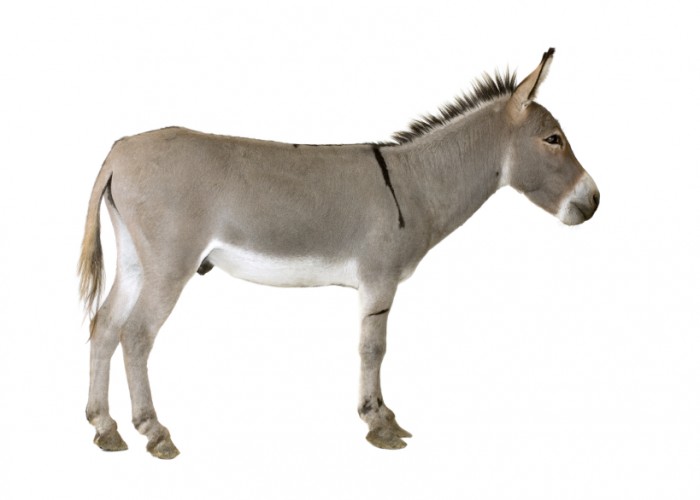In this blog, we’ll delve into the most common genetic diseases in dogs, shedding light on their causes, symptoms, and possible treatment options.
As a dog lover, it’s essential to be aware of the various health challenges our furry companions may face. Genetic diseases in dogs are a significant concern for breeders and pet parents.
Understanding these conditions can help us proactively safeguard our dogs’ well-being and potentially prevent or manage these conditions.
These are the most common genetic diseases, disorders, and conditions that affect dogs:
Table of Contents
1. MDR1 Mutation
A mutation of the MDR1 (multidrug resistance 1) geneaffects the function of a protein called P-glycoprotein. This protein plays a crucial role in the blood-brain barrier and the absorption and elimination of various drugs.
How Should You Treat Your Dogs with MDR1 Mutation?
If your dog has been diagnosed with the MDR1 mutation, it’s crucial to take certain precautions and adjust their medical care. Dogs can have a reduced ability, or even an inability, to eliminate certain drugs from their system, leading to increased sensitivity and potential toxicityWhen a dog with the MDR1 mutation is given a drug to which they are sensitive, it can result in various neurological signs, including tremors, seizures, ataxia (lack of coordination), blindness, and even coma or death in severe cases.
It’s important for dog parents to be aware of their dog’s MDR1 status, especially if their breed is known to be at higher risk for this mutation. Herding breeds, like collies and Australian shepherds, and long-haired whippets, have the highest occurrences. Veterinarians can perform a simple genetic test to determine if a dog carries the MDR1 mutation. They can provide specific guidance based on your dog’s breed, health history, and individual needs.
2. Progressive Retinal Atrophy (PRA)
Progressive Retinal Atrophy refers to a group of inherited retinal diseases that cause rapid or gradual degeneration of the photoreceptor cells in the eyes.
All genetic variations eventually result in blindness.. Generalized Photoreceptor Degeneration affects many breeds including Labradors, Cocker Spaniels, and Dachshunds.
While there is no cure for PRA, early detection through regular veterinary check-ups and genetic testing can aid in managing the disease and maintaining a good quality of life for affected dogs.
3. Von Willebrand Disease (vWD)
Von Willebrand Disease is an inherited bleeding disorder that affects both dogs and humans. It occurs due to a deficiency or malfunction of von Willebrand factor, a blood clotting protein.
Three types of von Willebrand Disease are recognized in dogs, with Type 1 accounting for the majority of cases and most commonly affecting Doberman pinschers. Affected dogs may experience prolonged bleeding from minor injuries, excessive bleeding during surgeries, or even spontaneous bleeding.
While there is no cure, vWD can be managed by avoiding certain medications, providing proper wound care, and in some cases, through transfusion.
4. Bladder Stones
Bladder stones, also known as uroliths or cystic calculi, are mineral deposits that develop in dogs. Urolithiasis, which refers to 1 or more stones in the urinary tract, is common in dogs; 97% of uroliths occur in the lower urinary tract, which includes the urinary bladder and urethra. Urolith formation is not a specific disease, but occurs as a consequence to a group of underlying disorders.
Bladder stones vary in size and composition, with common types including struvite, calcium oxalate, and urate. Approximately 80% of canine uroliths are either struvite or calcium oxalate. In at least one genetic line of the English cocker spaniel, struvite stone formation is a hereditary metabolic problem. There is a strong hereditary component to forming oxalate bladder stones; common breeds affected include Miniature schnauzers and English Bulldogs.Cystine urolithiasis, an uncommon form of urolithiasis, is an inherited defect described in a handful of breeds including the Newfoundland, Labrador retriever, and Australian cattle dog. Bladder stones can cause significant discomfort and lead to various complications if left untreated. Common symptoms of bladders stones include:
- Frequent urination: Dogs may need to urinate more frequently, often in smaller amounts.
- Difficulty urinating: Straining or discomfort during urination is a common sign.
- Blood in urine: Bladder stones can cause irritation and lead to bloody or discolored urine.
- Urinary accidents: Dogs may have accidents inside the house due to their inability to hold urine.
- Lethargy and loss of appetite: Some dogs may exhibit a decrease in energy levels and appetite.
5. Canine Dilated Cardiomyopathy (DCM)
Canine Dilated Cardiomyopathy is an inherited disorder that affects the heart muscle, causing it to weaken and enlarge.
Breeds such as Doberman pinschers, Newfoundlands, Great Danes, and Schnauzers are predisposed to this condition.
Affected dogs may be asymptomatic early in the course of disease. As disease progresses, symptoms of heart failure can develop and include coughing, increased respiratory rate, difficulty breathing, fatigue, and syncope (fainting). Non-specific signs can also occur and include anorexia, lethargy, weight loss, and weakness. While treatment options are limited, dietary changes, medications, and regular veterinary care can help manage the disease and improve the dog’s overall quality of life.
Being Proactive can Help Manage Your Dog’s Genetic Disease
Genetic diseases in dogs are caused by abnormalities or mutations in the genes that are inherited from their parents. These genetic abnormalities can result in a wide range of health conditions.
Awareness and understanding of common genetic diseases in dogs is crucial for responsible pet ownership.
While genetic diseases cannot always be prevented, early detection, regular veterinary care, and appropriate management strategies can significantly improve the quality of life for affected dogs.
While genetics play a significant role in the development of these diseases, environmental factors can also influence their expression and severity.
A comprehensive understanding of genetic and environmental factors, and the interplay between the two, is essential for effectively managing and preventing genetic diseases in dogs.
About the author
Dr. Laura Fontana is a licensed and accredited veterinarian providing virtual vet consultations to BetterVet customers. Dr. Fontana earned her DVM from Virginia-Maryland College of Veterinary Medicine in 2009. She completed an equine sports medicine internship and divided her time between equine and small animal ambulatory practice until 2014, at which time she started Signature Veterinary Services. From 2014-2023, she owned and operated Signature Veterinary Services, a full-service, mobile small animal practice, based out of San Diego. before joining the BetterVet team.








